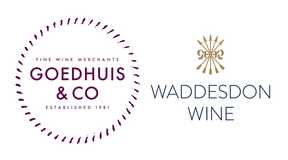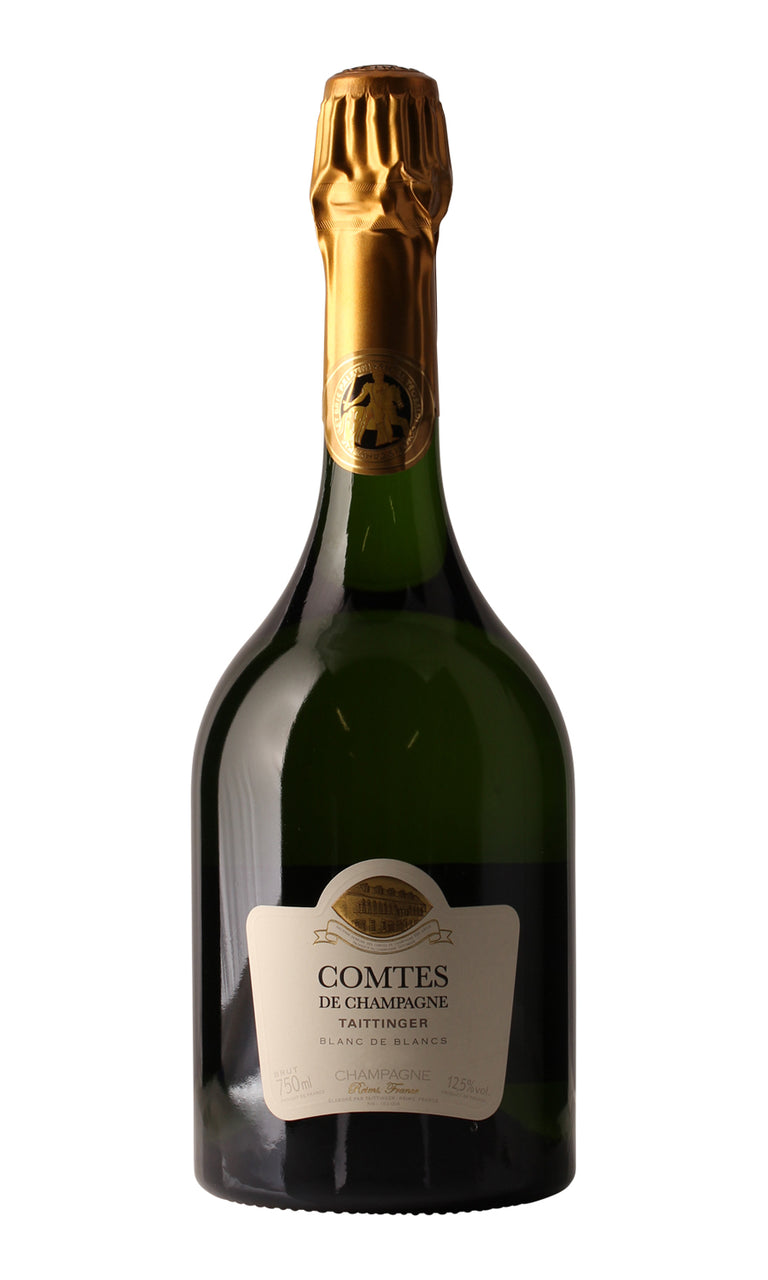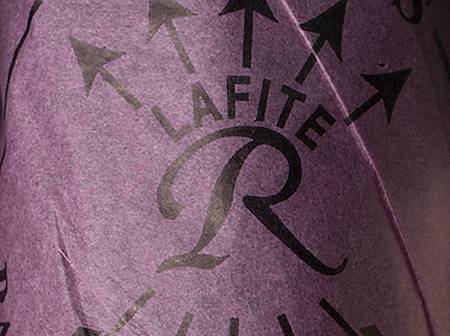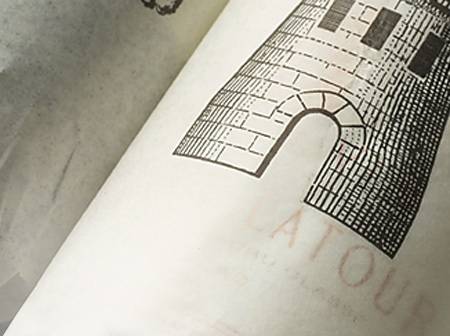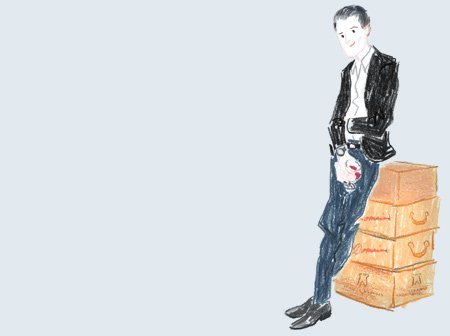- Colour Champagne_Sparkling
- Producer Taittinger
- Region Champagne
- Drinking 2017 - 2030
- Case size 1x600cl
- Available Now
2006 - Taittinger Comtes De Champagne Blanc de Blancs - 1x600cl
- Colour Champagne Sparkling
- Producer Taittinger
- Region Champagne
- Drinking 2017 - 2030
- Case size 1x600cl
- Available Now
Select pricing type
Need help? Call +44 (0)20 7793 7900 or email wine@goedhuiswaddesdon.com.
-
Goedhuis, March 2017
This cuvée is only made in exceptional vintages. It is made up of exclusively grand cru fruit from the Côte des Blancs, and matured for 8-10 years before release. Loïc Dupont, Taittinger's cellar master, says the 2006 has been a wonderful surprise, showing profound character and excellent finesse. Antonio Galloni declared it “nothing short of magnificent” when he gave it 97+ points. A nose of toast and salty iodine notes indicate gentle evolution. A very fine mousse introduces the palate of citrus fruit, honeysuckle, and hazelnuts. This is exquisitely layered, rich and balanced. There is poise in the vein of chalky minerality running through its centre. It is a stunning Champagne, weightless on entry, with power and complexity persisting right to the lingering finish.
-
Antonio Galloni, July 2015, Score: 97+
Two thousand six is destined to go down as an important year in the modern-day history of Taittinger. Pierre-Emmanuel Taittinger succeeded in buying the winery from the Starwood Hotel Group and bringing it under family control once again. He also made two fabulous tête de cuvées. The 2006 Comtes de Champagne in particular is going to make a very strong case for inclusion in any conversation about the all-time great vintages of Comtes. The 2006 Comtes de Champagne is striking, especially in the way it brings together elements of ripeness and freshness in a hypothetical blend of the 2002 and 2004. Smooth and creamy on the palate, the 2006 is all about texture. There is a real feeling of density and weight in the 2006, qualities I expect to see grow with time in the bottle. All the elements fall into place effortlessly. The 2006 has been nothing short of magnificent both times I have tasted it. Comtes de Champagne remains the single best value (in relative terms) in tête de cuvée Champagne. I suggest buying a case and following it over the next 20-30 years, which is exactly what I intend to do. There is little doubt the 2006 Comtes de Champagne is a magical Champagne in the making. Drink 2016 - 2046
-
Wine Advocate, March 2016, Score: 94
Based on first pressing Chardonnay from the Côte des Blancs, the 2006 Comtes de Champagne Blanc de Blancs opens with a precise, fresh and concentrated bouquet of ripe fruits on the nose. On the palate this is a less rich and opulent 2006, but its complexity, intensity and tension in combination with the linear freshness, purity and serious expression in the long and mineral finish, make this a top wine of the vintage. Drink 2016-2021
-
James Suckling, January 2018, Score: 96
This is settling into a deeper presence. It has a freshness that really appeals, along with Taittinger's signature toasty layer of autolysis, grilled nuts and praline. Plenty of flesh and weight on the palate. Acidity clasps ripe peach and mango fruits, finishing long, powerful and fine. Drink now.
-
Jancis Robinson, November 2013, Score: 19
Disgorged April 2013 for this tasting. Very lively bead indeed. Very sumptuous nose seems eerily close to fine white Côte d'Or burgundy. Still tight and very glamorous. Really classy and explosive. Hugely promising. There is delicacy and charm here.
Producer
Taittinger
One of the most recognised Champagne Houses in the world, Taittinger was originally founded in 1734 by Jacques Fourneaux. It was not until 1931 that its connections to the Taittinger family were established with it was purchased by founder, Pierre Taittinger. The hallmark of the Taittinger blend is the high percentage of Chardonnay which adds a natural elegance and creaminess to the wines. Today, it remains owned and manage...Read more
One of the most recognised Champagne Houses in the world, Taittinger was originally founded in 1734 by Jacques Fourneaux. It was not until 1931 that its connections to the Taittinger family were established with it was purchased by founder, Pierre Taittinger. The hallmark of the Taittinger blend is the high percentage of Chardonnay which adds a natural elegance and creaminess to the wines. Today, it remains owned and managed by the Taittinger family - a rarity in the region for a producer of this size - and is run by Pierre-Emmanuel Taittinger.Read less
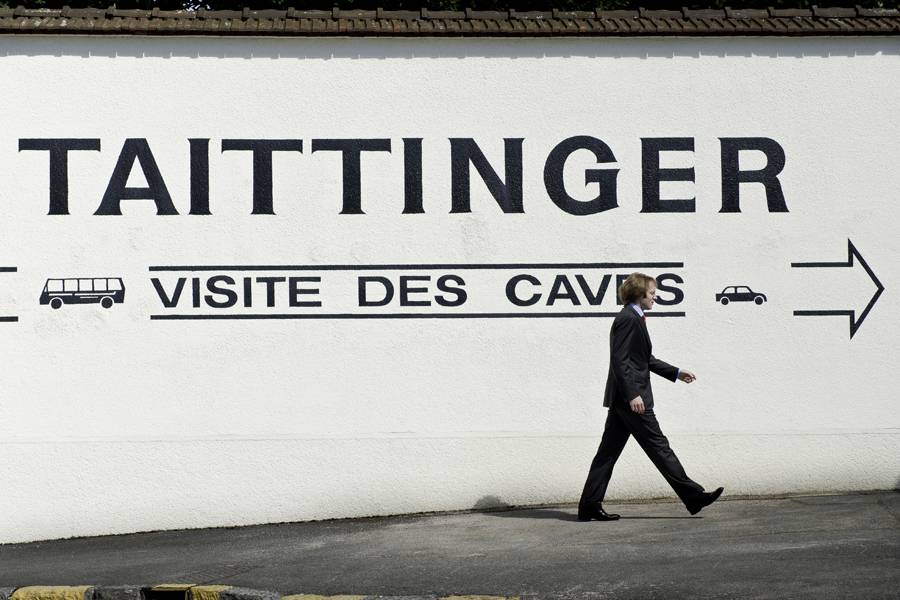
Region
Champagne
Champagne, the world's greatest sparkling wine, needs little introduction - with imitations produced in virtually every country capable of growing grapes, including such unlikely candidates as India and China. The Champagne region, to the north of Paris, has the most northerly vineyards in France, with vines grown on slopes with a southerly exposure to maximise sunlight. The soil is chalky, providing an excellent balance of drainage and water retention. The key to the wine is in the cellar - the bubbles result from a second fermentation in the bottle and the rich toasty flavours in great Champagne come from extended bottle ageing on the yeasty lees. Until the eighteenth century, the wines produced in the Champagne area were light acidic white wines, with no hint of sparkle. However glass and closure technology developed at that time and it was not long before Dom Perignon, a Benedictine monk at the Abbey of Hautvilliers, started experimenting with blends and produced the first recognisable champagne. In a world accustomed to still wines, the advent of champagne was almost a flop. It was saved when it became fashionable at the French court as a result of Louis XV's mistress Madame de Pompadour commenting "Champagne is the only wine that lets a woman remain beautiful after she has drunk it." And the rest is history, with famous (or infamous) champagne lovers including Casanova, Dumas, Wagner, Winston Churchill, James Bond and Coco Chanel.
